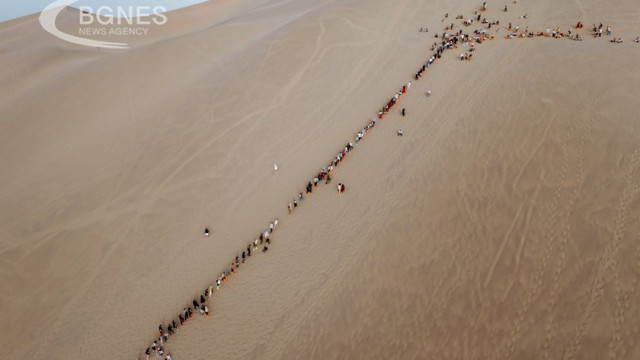The star dunes - or pyramidal dunes - are so named because of their characteristic shapes and reach hundreds of meters in height.
They are found in Africa, Asia and North America, as well as on Mars, but until now experts have not been able to determine when they formed.
Now scientists have discovered that the Lala Lalia dune in Morocco was formed 13,000 years ago, the BBC reported.
Star dunes are created by opposing winds that change direction. Understanding their age helps scientists understand these winds and unravel the climate of that era, says Professor Geoff Duhler of Aberystwyth University, who published the research with Professor Charles Bristow of Birkbeck University.
Lala Lalia (an indigenous language name meaning the highest sacred point) is located in the Erg Chebi sandy area in southeastern Morocco. It is 100 m high and 700 m wide with radiating arms.
After its initial formation, it stopped growing for about 8,000 years, then expanded rapidly over the last few thousand years.
Deserts can usually be identified in Earth's geologic history, but star dunes have not been dated until now.
Professor Dühler says this may be because they are so large that experts did not realize they were looking at a single dune.
"These findings will probably surprise a lot of people, as we see how quickly this huge dune formed and that it is moving across the desert at about 50cm per year," he adds.
Scientists use a technique called luminescence dating to determine the age of star dunes. The method calculates when the grains of sand were last exposed to daylight.
Sand samples were taken in the dark from Morocco and analyzed in a laboratory under low red light conditions similar to an old-fashioned photography workshop.
Professor Dühler describes the mineral grains in the sand as "small rechargeable batteries". They store in their crystals energy that comes from radioactivity in the natural environment./BGNES



.jpg)
.jpeg)


